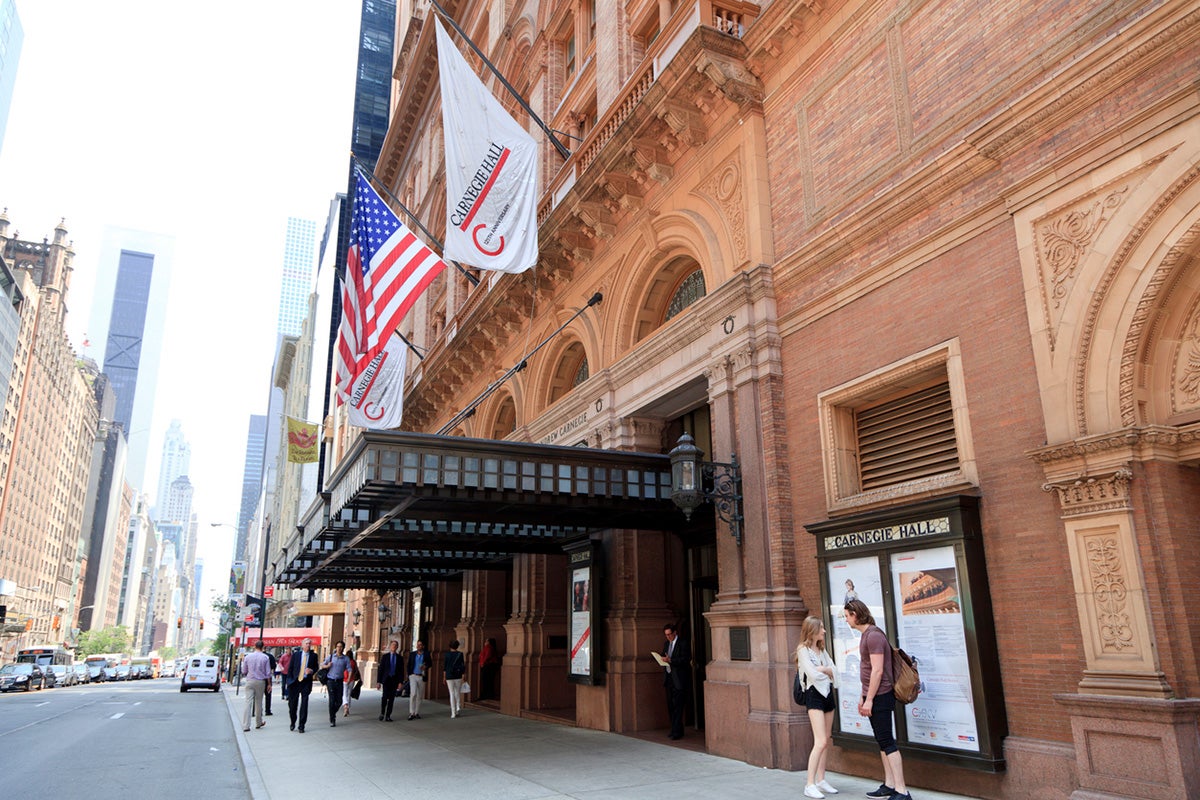Carnegie Hall has set an international standard for music, renowned for its connection to incredible performers, spellbinding acoustics and unique history. The historic landmark has hosted several musical icons from Tchaikovsky, Dvořák, Mahler and Bartók to Billie Holiday, Judy Garland and The Beatles — solidifying it as one of the most prestigious concert venues in the world. UCF choral conducting graduate David Redman ’10MA will join the ranks of these legendary artists by performing at Carnegie Hall next spring.
Redman will take the stage to perform Dan Forrest’s Requiem for the Living alongside 150 voices from around the world and the New England Symphonic Ensemble.
Here Redman discusses his journey as a conductor, the preparation process for such a significant performance and the anticipation surrounding his upcoming appearance at Carnegie Hall.

Can you share insight into your journey from earning your master’s in choral conducting at UCF to conducting at Carnegie Hall?
I completed my master’s in choral conducting at UCF in 2010 under the guidance of David Brunner, former director of choral activities. I was proud to call him my professor then and am pleased to call him my colleague and friend today.
Upon completing my master’s degree, I attended University of South Florida in Tampa, Florida, where I earned my doctoral degree in music education in 2016 under the guidance of Jennifer Bugos. While working on my doctoral degree, I accepted an invitation from Bel Canto Singers of Daytona in 2014 to be their artistic director and conductor. I am proud to be their third conductor in 51 years, following William Rogers and Norris Williams. After earning my doctoral degree, I returned to my home in Edgewater, Florida, and accepted a position as director of choral activities at Spruce Creek High School in Port Orange, Florida.
Can you share more about the piece you’ll conduct at Carnegie Hall?
I will be conducting Dan Forrest’s Requiem for the Living. This work is comprised of five movements selected from the Roman Catholic Mass, including the Introit-Kyrie, Vanitas Vanitatum, Agnus Dei, Sanctus and Lux Aeterna. It is approximately 45 minutes in length.
How do you prepare for such a significant performance?
The Bel Canto Singers of Daytona have presented this work twice during my tenure as artistic director and conductor. It was well received by the musicians and patrons of the chorus. We perform this work with a chamber orchestra in Florida and are excited to present this with a 150-voice chorus and 80-piece orchestra in New York City.
How do you interpret a piece of music as a conductor, particularly when it’s a well-known or beloved composition?
Each conductor has their own way of preparing a work. I listen to recordings, study the score and determine if the work is a good fit for my chorus. I then determine what accompaniment is appropriate for the performance, rather it be piano, organ or chamber ensemble. If soloists are required, will they be sung by Bel Canto singers or will professionals outside the chorus be recruited? I research the work to determine if it has been presented recently and/or locally. I ascertain if my chorus will enjoy preparing and performing the work, and lastly, if I will enjoy preparing and conducting the work.
What do you hope the audience takes away from the performance at Carnegie Hall?
While a requiem is a genre generally reserved for the departed, Dan Forrest’s requiem is dedicated to those still living. The first movement, Introit-Kyrie, reflects the grief common to human existence. Movement two, Vanitas Vanitatum, concentrates on the “vanity of vanities, all is vanity” from Ecclesiastes. Agnus Dei, movement three (out of traditional order), we need to see the Lamb of God who died to redeem humankind from fallenness. Movement four, Sanctus, depicts the wonder of heaven and Earth. The final movement, Lux Aeterna, is the arrival of rest and peace.
While this work is sacred in content, the beauty of the musical composition is equal to the lyric. One can be moved regardless of religious conviction. I hope the audience will respond positively to the work with a smile and a possible tear on their cheek.
Being invited to perform at a venue as prestigious as Carnegie Hall is a dream of those in the performing arts. What advice would you give young adults first discovering their dream?
Opportunities exist to perform at prestigious halls around the world. Masterworks and contemporary compositions are planned every year and can be accessed by a search, which is just a keystroke away.
What emotions do you anticipate as you step onto the stage at Carnegie Hall May 24, 2025?
I will be in awe of standing on a stage where many of the world’s greatest musicians have stood. I will be humbled that I was asked to conduct this work. I will be thrilled that I may share my interpretation with my chorus of 150 people, some who may or may not have performed this work prior. I will give credit to all those who have guided and educated me from my youth to this moment in my career.
Tickets will be available for purchase via the Carnegie Hall box office one month before the concert. To sing in this concert, you must be part of Bel Canto Singers of Daytona for the two months before the performance and attend rehearsal remotely. Visit www.belcantodaytona.org for more details.




